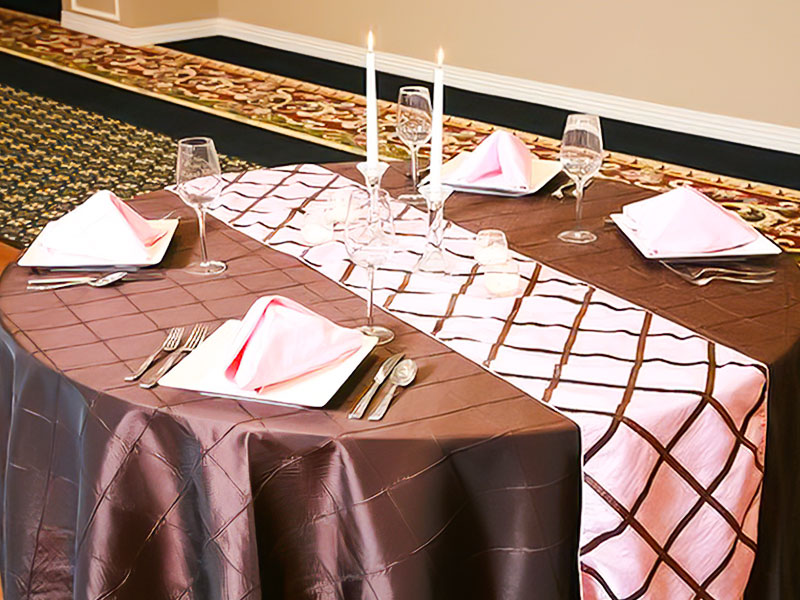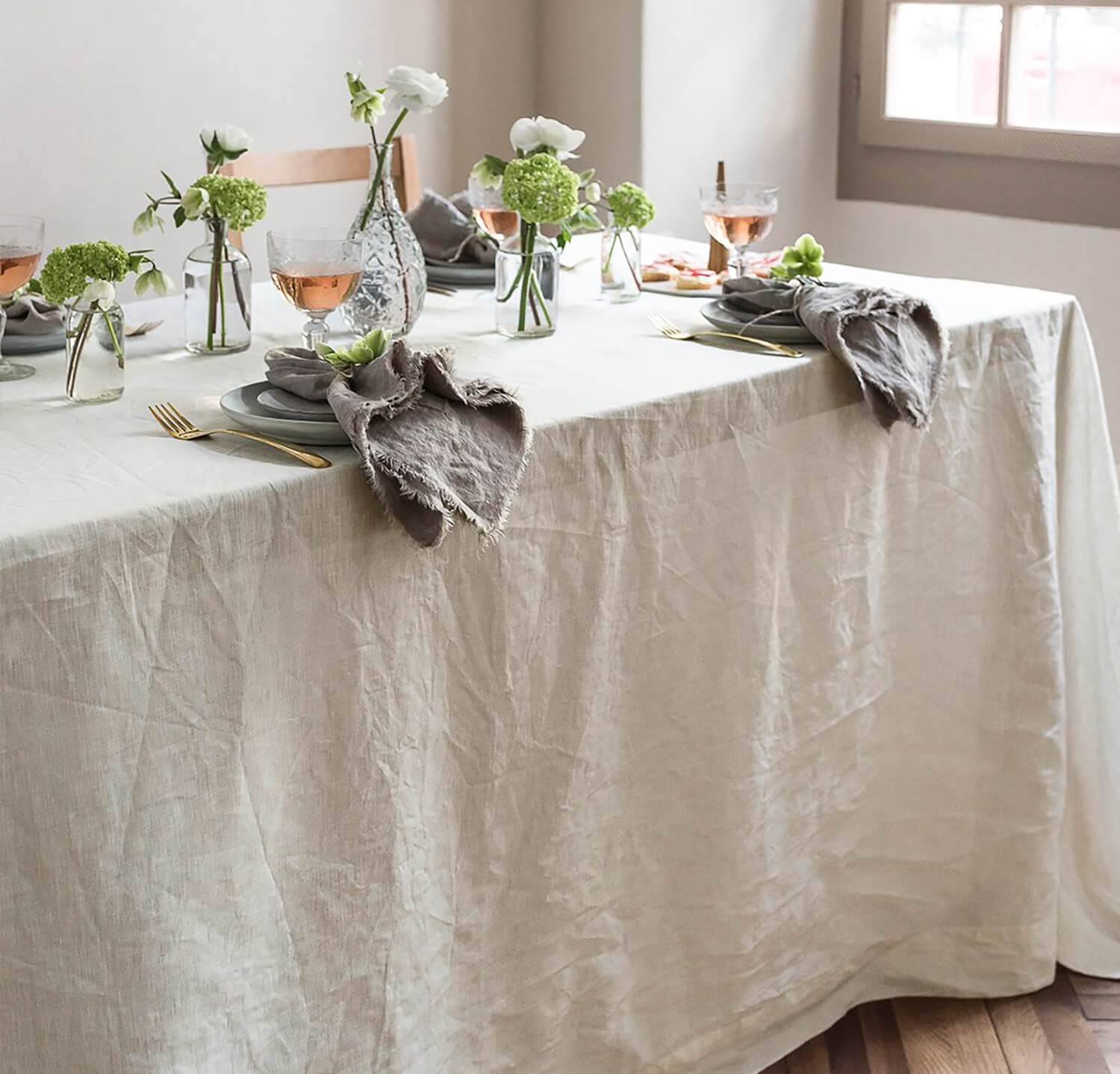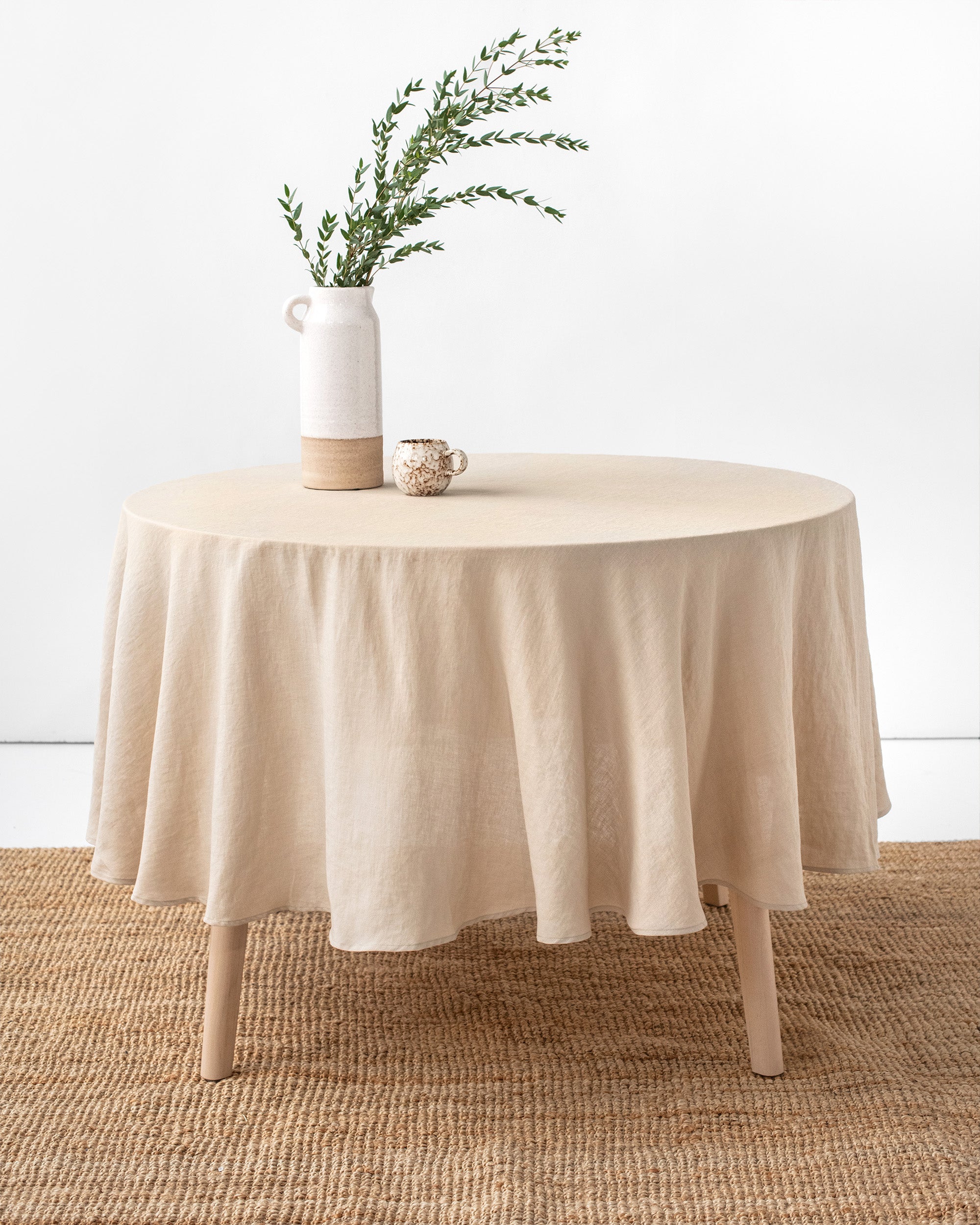Versatile Table Cloths: Designs and Fabrics for Any Type Of Occasion
Wiki Article
Linen Textile Technologies: Checking Out Modern Trends and Creative Applications in Layout and Textile Market
From sustainable manufacturing techniques to innovative weaving technologies, the advancement of bed linen is improving the landscape of the textile industry. As we delve into the worlds of imaginative style applications and the introduction of linen blends and hybrid textiles, a brand-new phase unfolds in which linen's duty in future fabric advancements takes center stage.Lasting Practices in Linen Production
Lasting techniques in linen production have actually ended up being progressively important in the textile sector's efforts to minimize ecological effect and promote moral sourcing techniques. Linen, an all-natural fiber obtained from the flax plant, offers a variety of benefits such as breathability, biodegradability, and resilience. Nonetheless, conventional approaches of linen manufacturing can include substantial water usage, chemical use, and energy-intensive procedures.To address these difficulties, many fabric producers are taking on sustainable methods throughout the bed linen production process. This consists of sourcing flax from natural farms that prevent harmful pesticides and chemicals, applying water-efficient retting techniques to essence fibers from the flax stalks, and making use of environment-friendly dyes and coatings. Additionally, some companies are buying renewable energy resources to power their production facilities and minimizing waste via recycling and upcycling initiatives.
Technological Innovations in Bed Linen Weaving
With the growing emphasis on sustainable methods in bed linen manufacturing, the fabric sector is currently witnessing a surge in technological improvements especially focused on revolutionizing the art of linen weaving. These developments are reshaping the way linen materials are created, using boosted performance, top quality, and creative thinking in weaving strategies.Among the vital technical innovations in bed linen weaving is the combination of electronic looms. These innovative looms are outfitted with software program that allows for intricate and complex styles to be woven with precision. By digitizing the weaving process, manufacturers can attain better consistency and accuracy in their bed linen materials.
Moreover, developments in yarn spinning modern technology have actually allowed the production of finer and even more resilient bed linen yarns - table cloths. This causes softer and smoother linen materials that retain their top quality even after multiple uses and cleans
Furthermore, the development of eco-friendly dyeing procedures and surfaces for bed linen materials is acquiring grip. These sustainable techniques not just reduce the ecological impact yet likewise provide to the boosting consumer need for ethically created fabrics.
Creative Style Applications for Bed Linen
Innovative creative strategies are progressively forming the imaginative layout applications for linen in the textile industry. Bed linen's all-natural visual allure and ability to blend with other fabrics make it a favorite choice for creating distinct garments and devices that provide to the eco conscious consumer.Furthermore, developers are explore bed linen in home decoration, using its durable and breathable nature to craft stylish home furnishings such as drapes, bed linens, and furniture. The appearance and drape of bed linen bring a feeling of refinement and convenience to indoor areas, adding a touch of beauty to modern homes.

Bed Linen Blends and Crossbreed Fabrics

Crossbreed fabrics, on the other hand, take the idea of mixing a step even more by including additional aspects such as metal strings, recycled products, or conductive fibers. These innovative textiles not just increase the layout possibilities however likewise present useful aspects like conductivity, antimicrobial residential properties, or boosted resilience. Hybrid materials are significantly being made use of in various industries, including fashion, interior design, and technical textiles, where the demand for multifunctional materials is on the rise.
Linen's Role in Future Textile Innovations

In the realm of future fabric technologies, linen is expected to be a crucial gamer in the development of sophisticated useful fabrics. Developers and scientists are discovering ways to improve linen's intrinsic top qualities through technological improvements, such as including clever fabrics, nanotechnology, and efficiency finishes. These developments aim to raise linen's performance qualities, making it ideal for a more comprehensive series of applications, from activewear to safety apparel.
Moreover, the combination of linen with various other all-natural or artificial fibers opens countless opportunities for creating unique fabrics with special buildings and capabilities. By leveraging bed linen's features and discovering ingenious blends, the textile industry is poised to present amazing advancements that deal with developing consumer demands and sustainability needs.
Final Thought
To conclude, the exploration of lasting techniques, technological advancements, creative layout applications, linen blends, and its role in future fabric advancements highlight the continuous evolution of bed linen fabric in the modern-day style and textile sector. With a focus on innovation and creative thinking, the adaptability and environmentally friendly nature of linen make it a useful material for manufacturers and designers alike, leading the way for further advancements and advancements in the area of textiles.As we dig into the realms of imaginative style applications and the appearance of linen blends and crossbreed fabrics, a brand-new phase unfolds in which bed linen's duty in future textile technologies takes center stage.
Discovering the fusion of bed linen with various other fabrics has actually led to the emergence of ingenious blends and crossbreed fabrics in the contemporary textile sector. Linen blends provide an one-of-a-kind combination of the attributes of bed linen with those of various other fibers, resulting in fabrics that possess improved properties such as enhanced longevity, improved draping, and minimized wrinkling.The evolution of bed linen blends and hybrid materials has actually established the stage for Linen to play a pivotal function in driving future fabric technologies.In the realm of future fabric technologies, bed linen is anticipated to be a vital player in the development of advanced useful textiles.
Report this wiki page